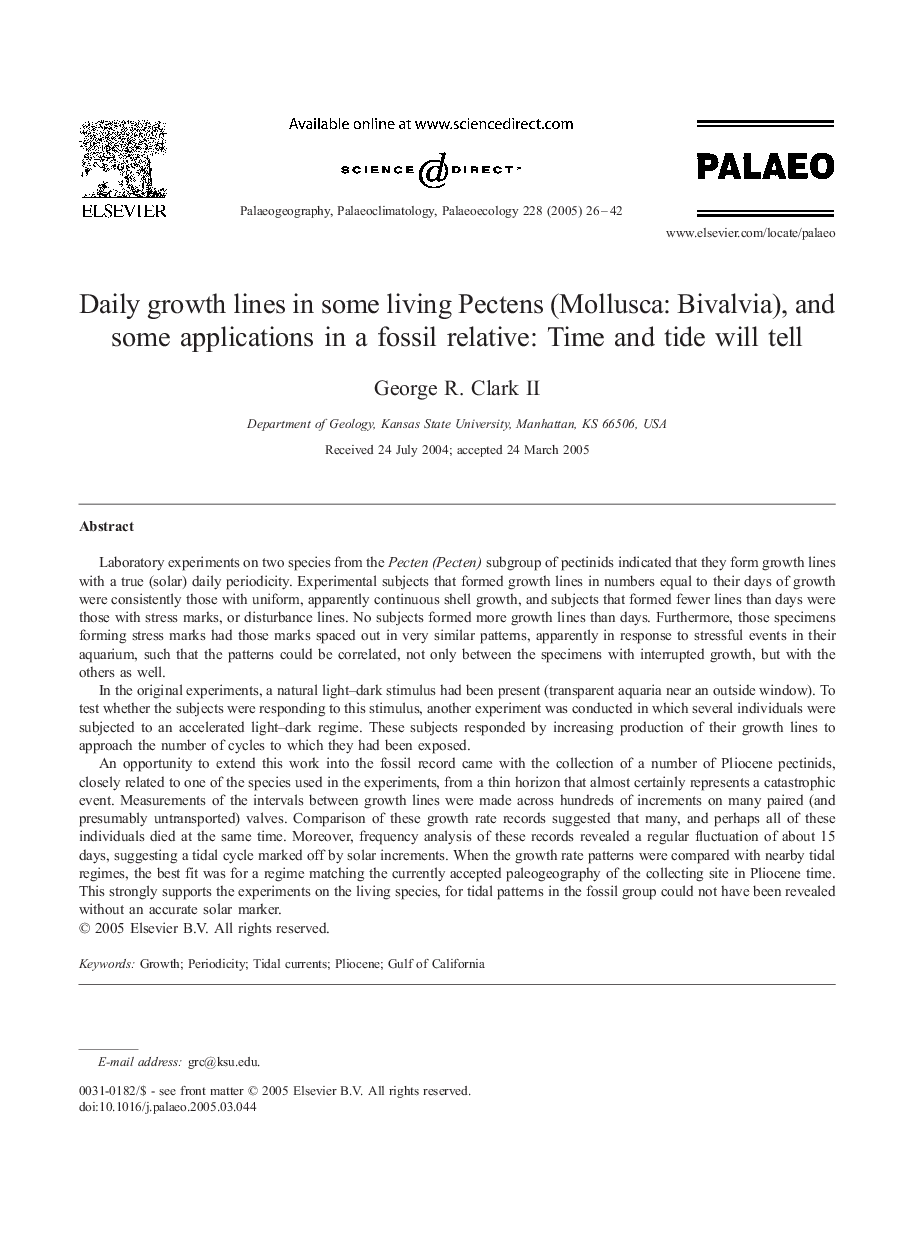| Article ID | Journal | Published Year | Pages | File Type |
|---|---|---|---|---|
| 9462961 | Palaeogeography, Palaeoclimatology, Palaeoecology | 2005 | 17 Pages |
Abstract
An opportunity to extend this work into the fossil record came with the collection of a number of Pliocene pectinids, closely related to one of the species used in the experiments, from a thin horizon that almost certainly represents a catastrophic event. Measurements of the intervals between growth lines were made across hundreds of increments on many paired (and presumably untransported) valves. Comparison of these growth rate records suggested that many, and perhaps all of these individuals died at the same time. Moreover, frequency analysis of these records revealed a regular fluctuation of about 15 days, suggesting a tidal cycle marked off by solar increments. When the growth rate patterns were compared with nearby tidal regimes, the best fit was for a regime matching the currently accepted paleogeography of the collecting site in Pliocene time. This strongly supports the experiments on the living species, for tidal patterns in the fossil group could not have been revealed without an accurate solar marker.
Related Topics
Physical Sciences and Engineering
Earth and Planetary Sciences
Earth-Surface Processes
Authors
George R. II,
